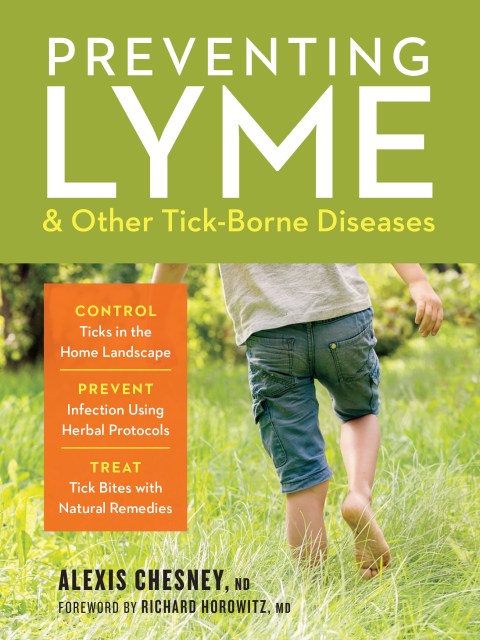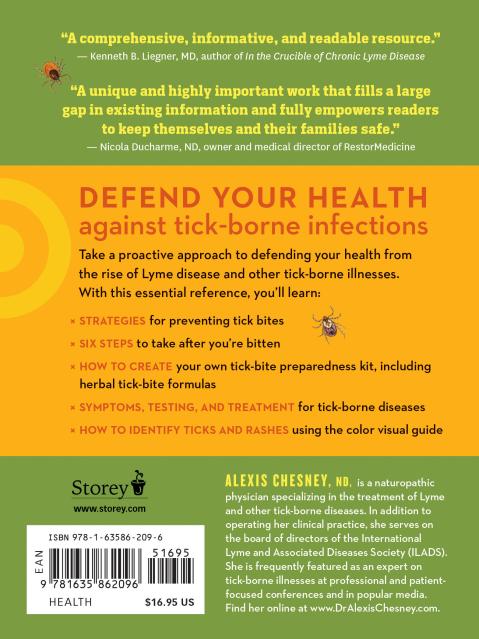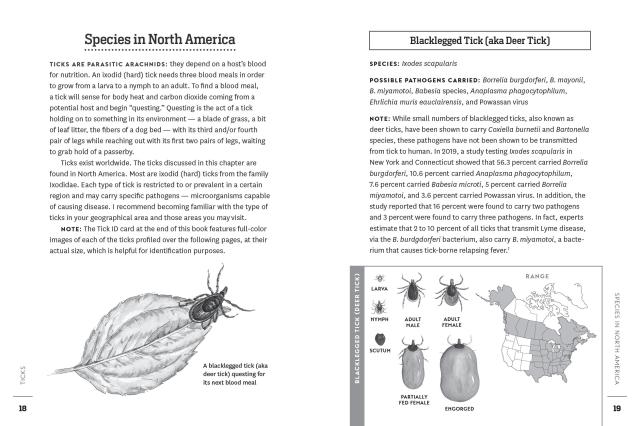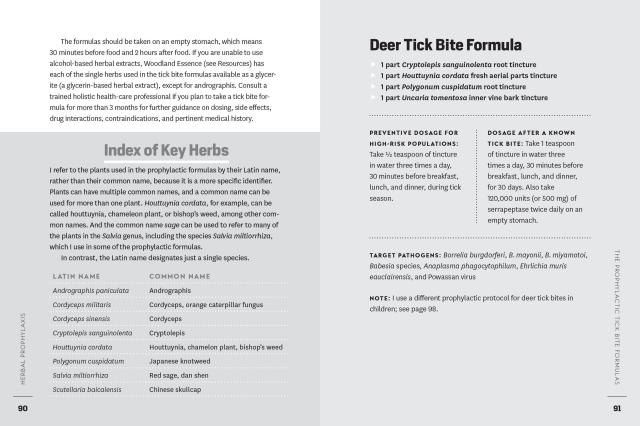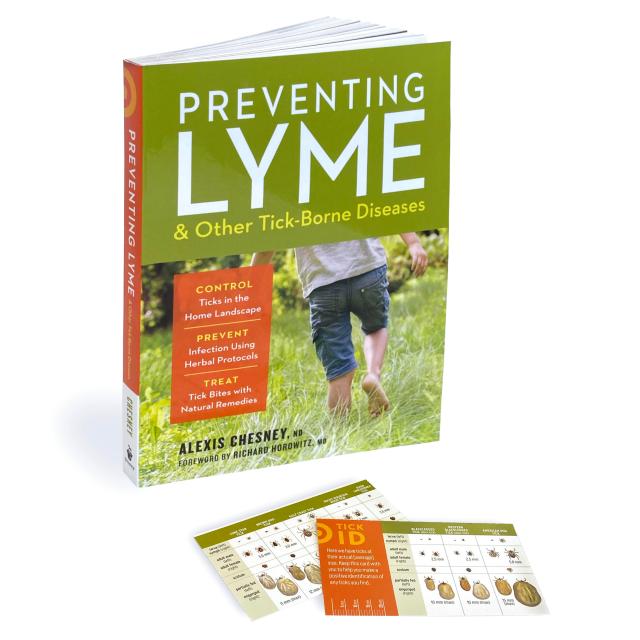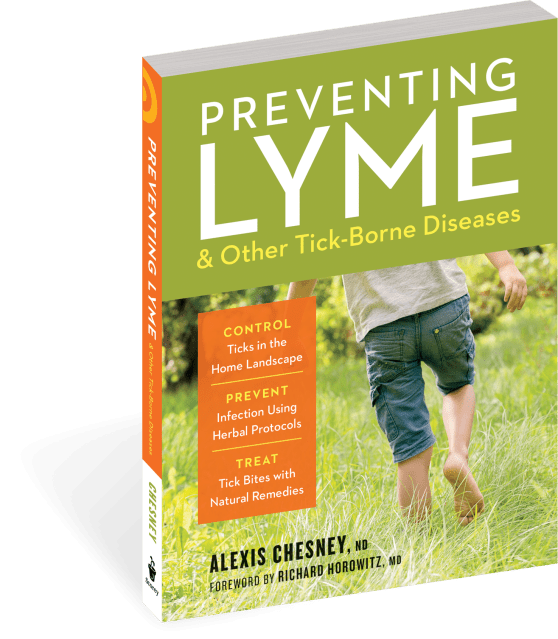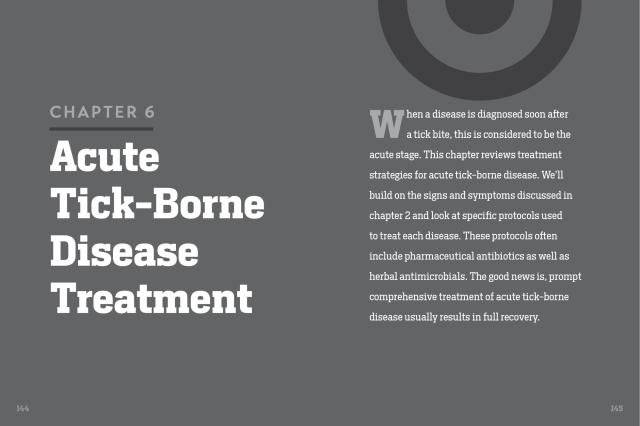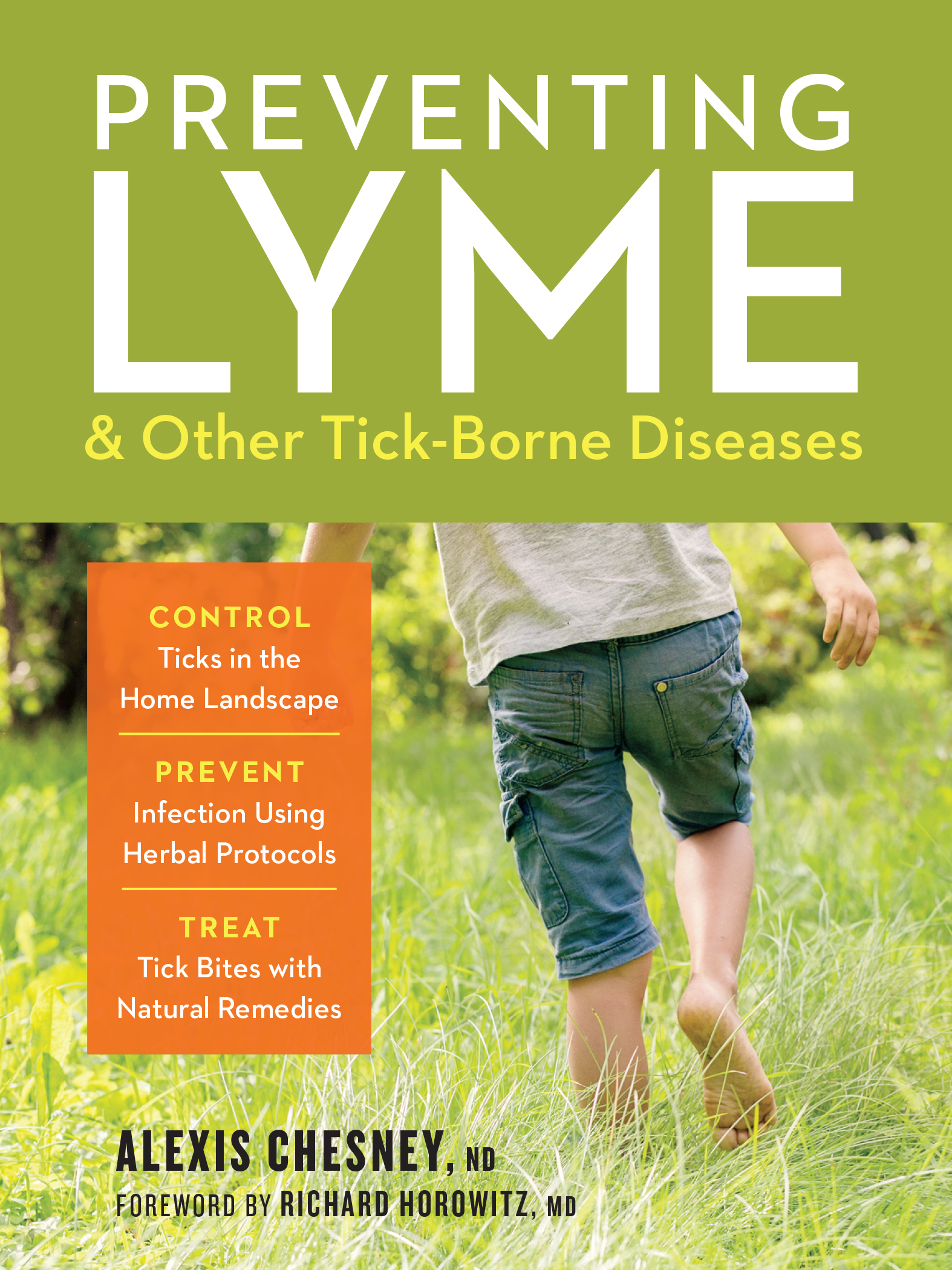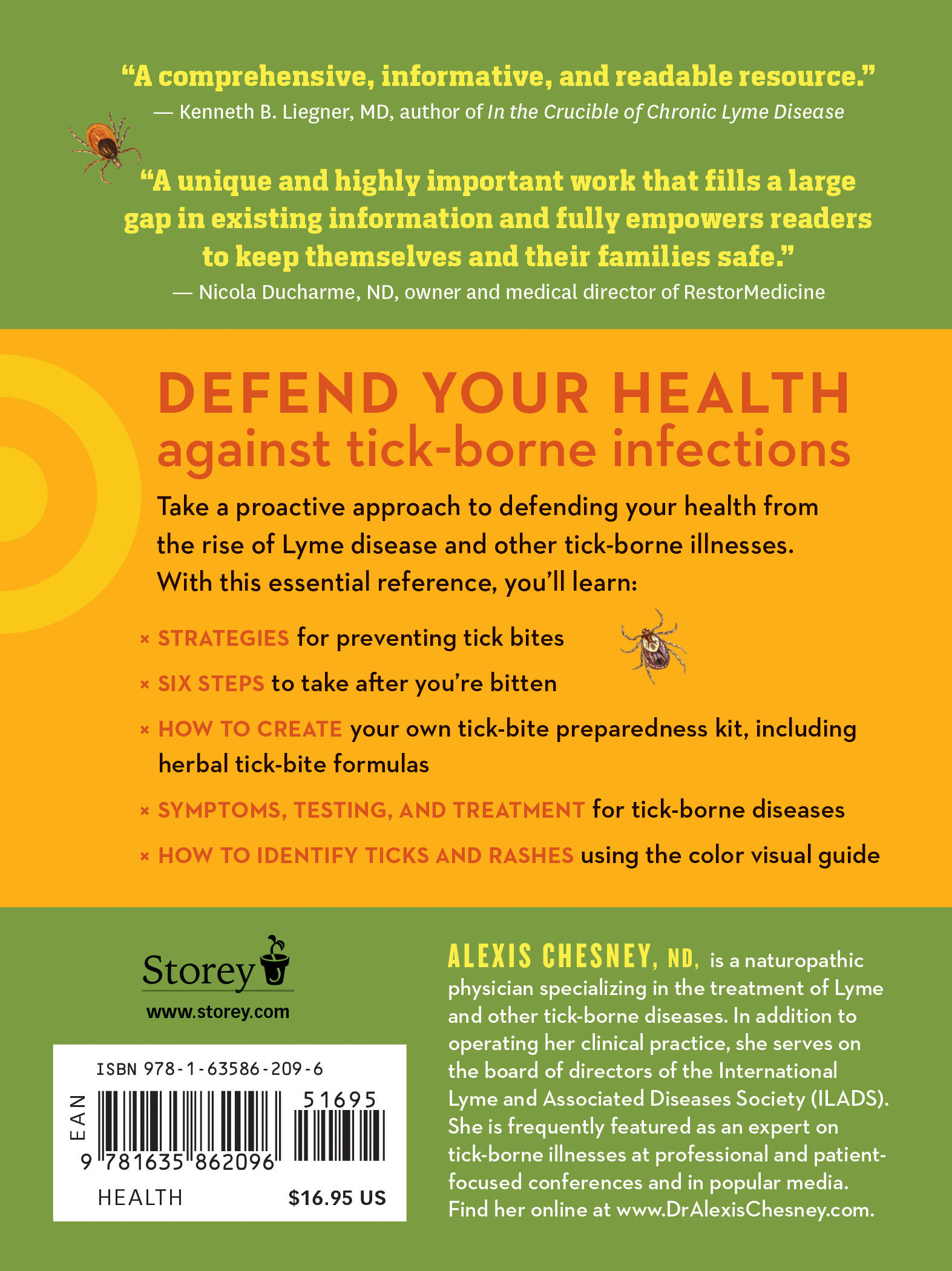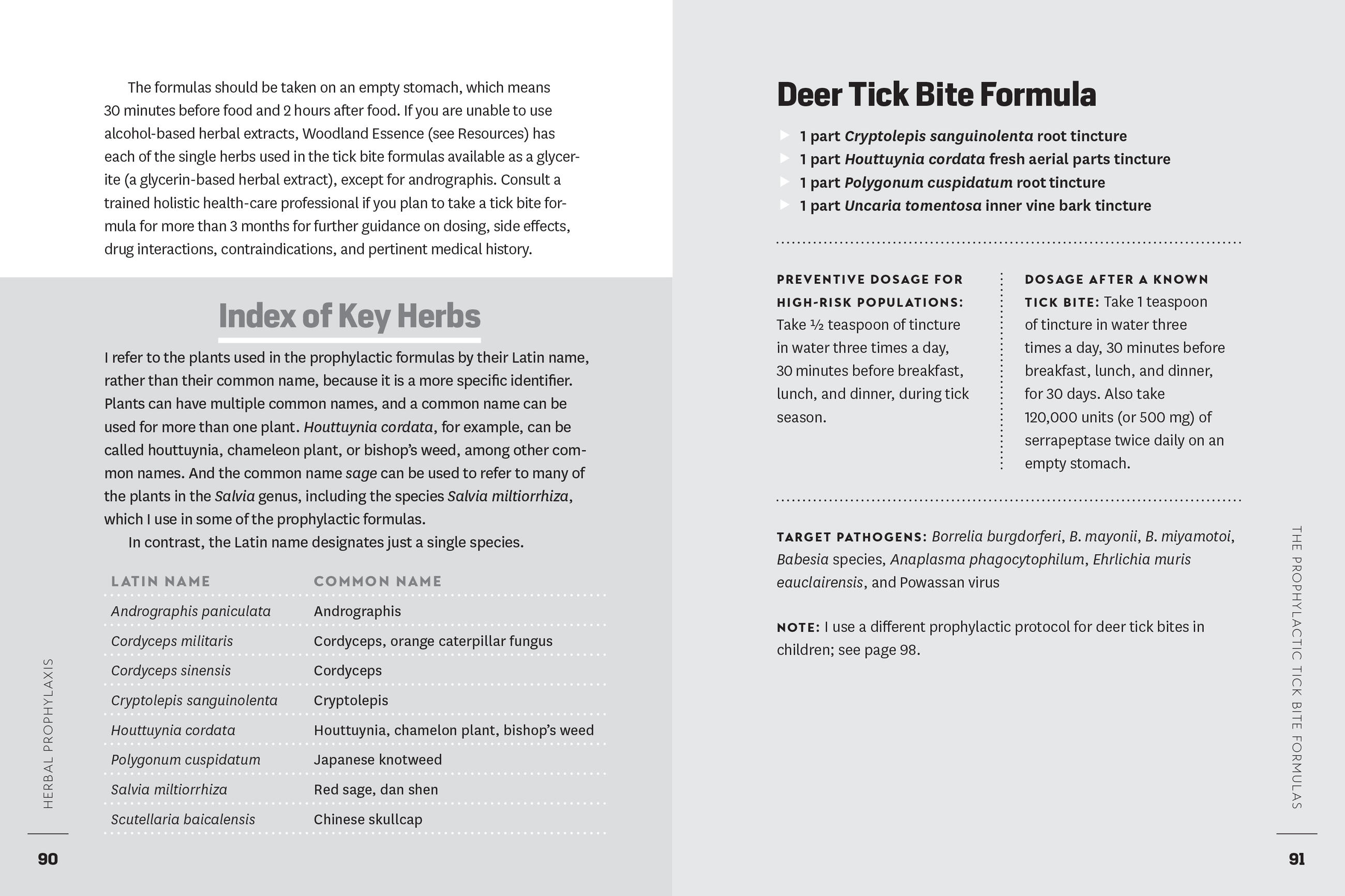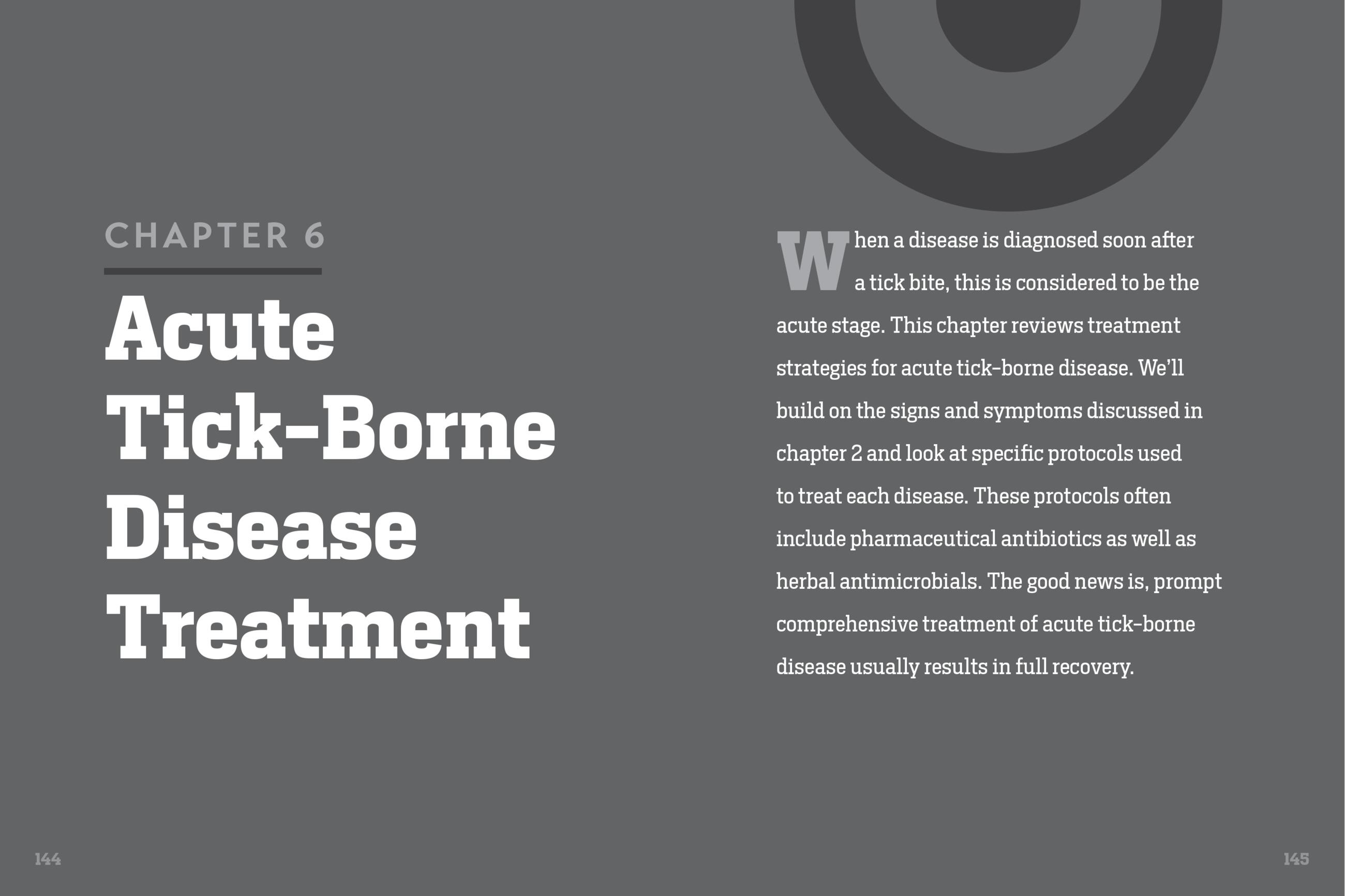Promotion
Shop now and save 20% on your back-to-school purchases & get free shipping on orders $45+ Use code: SCHOOL24
Preventing Lyme & Other Tick-Borne Diseases
Control Ticks in the Home Landscape; Prevent Infection Using Herbal Protocols; Treat Tick Bites with Natural Remedies
Contributors
Foreword by Richard Horowitz, MD
Formats and Prices
Price
$16.95Price
$22.95 CADFormat
Format:
- Trade Paperback $16.95 $22.95 CAD
- ebook $11.99 $15.99 CAD
This item is a preorder. Your payment method will be charged immediately, and the product is expected to ship on or around March 3, 2020. This date is subject to change due to shipping delays beyond our control.
Also available from:
-
"Lyme disease, and the debilitating conditions associated with it, is difficult to detect and treat, which makes this book by naturopathic physician and acupuncturist Chesney especially important. Included are descriptions of different kinds of ticks, their habitats, and the types of pathogens they carry and transmit. Chesney thoroughly explains preventative measures against the disease, such as pharmaceuticals and herbal tinctures (specific to geography and the local tick populations), including dosages for children. Most important, the author covers what to do after you are bitten and what to look for beyond the tell-tale bull’s-eye rash. A chart that suggests blood tests for specific tick-borne pathogens is alone worth the price of admission. Also included are suggestions on how to find a Lyme-literate physician." — Library Journal, starred review
"Alexis Chesney’s Preventing Lyme Other Tick-Borne Diseases is a comprehensive, informative, and readable resource for those who wish to incorporate naturopathic approaches to prevention and treatment."— Kenneth B. Liegner, MD, author of In the Crucible of Chronic Lyme Disease
"In Preventing Lyme Other Tick-Borne Diseases, Alexis Chesney, ND not only explores ticks and the various pathogens they carry and the symptoms those pathogens produce, but she provides resources for avoiding tick exposure, herbal treatment options for those that find a bite or are at high risk of being bitten, the latest options for testing, and treatment options to prevent the likelihood of an acute infection becoming chronic Lyme disease. This is a book you'll want in your library before you need it!" — Scott Forsgren, FDN-P, Editor and Founder, BetterHealthGuy.com
“Dr. Chesney has created a unique and highly important work. Her focus on prevention goes far beyond just avoiding tick-friendly landscapes and doing tick checks. She helps readers feel knowledgeable and fully empowered to keep themselves and their families safe from an epidemic that impacts the lives of so many thousands of people. Her practical advice on using herbal formulas to address tick bites fills a large gap in existing information, which covers antibiotic-only therapy in Lyme prophylaxis and/or acute Lyme. I will certainly be keeping a copy of this book close and following Dr. Chesney’s directions and guidelines.” — Nicola Ducharme, ND, Lyme-literate naturopathic doctor and owner and medical director of RestorMedicine
- On Sale
- Mar 3, 2020
- Page Count
- 192 pages
- Publisher
- Storey
- ISBN-13
- 9781635862096
Newsletter Signup
By clicking ‘Sign Up,’ I acknowledge that I have read and agree to Hachette Book Group’s Privacy Policy and Terms of Use
